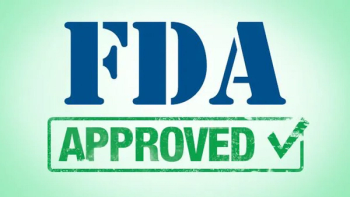
- October 2017
- Volume 12
- Issue 8
How Often Do Vesicant Extravasations Occur?
Incidence evaluated at 11 National Cancer Institute–designated cancer centers reveals more about occurrence in day-to-day clinical practice.
Perhaps one of the most nerve-racking moments in an oncology nurse’s career is when a vesicant extravasation is suspected. These leakages can occur despite a nurse’s best efforts. For instance, intravenous (IV) devices can malfunction or break, patients can move and dislodge them, and device securement methods can fail. Extravasations also can occur when nurses deviate from the standard of care and institutional policies, such as when a vesicant is administered and there is no blood return or other evidence of correct IV device placement and patency.
Fortunately, vesicant extravasations are rare events. How rare? Much of what we know about their incidence comes from single-institution studies conducted decades ago. In the years since that research was published, oncology nursing practice has evolved, IV devices have improved (eg, rigid “butterfly” steel needles are no longer used for chemotherapy administration), and much more has been learned about vesicants and their potential to destroy tissue. There is no national data depository for vesicant extravasations, however, so how often they occur in day-to-day clinical practice remains unknown.
When members from National Cancer Institute (NCI)-desig nated cancer centers created a nursing consortium in 2011, they chose to evaluate vesicant chemotherapy extravasation incidence at 11 of the centers as their first project. Incidence was defined as the number of extravasation events (numerator) over the number of drug infusions given for each chemotherapy agent (denominator). The group collected and analyzed data on 10 vesicants, as well as 14 agents classified as irritants or irritants with vesicant potential. A total of 739,812 doses of vesicant and irritant chemotherapy infusions were administered to adult patients and included in the evaluation. The incidence of extravasation events was 0.07% for vesicant chemotherapy and 0.09% for the irritant chemotherapy. A total of 673 events occurred during the 4-year data collection period. Extravasations from peripheral IVs accounted for 87.7% of the total vesicant extravasations and 96.7% of the total irritant infiltrations. The project confirmed that extravasations are indeed rare occurrences.1
The consortium focused on vesicant extravasation incidence and appropriately included suspected cases—when in doubt, these should be managed in accordance with guidelines. There is little to no harm in treating a suspected extravasation, but, in contrast, patients can be harmed when vesicant extravasations, especially DNA-binding anthracycline extravasations, go untreated.
While more is now known about the incidence of infiltration of irritant chemotherapy and irritants with vesicant potential, the outcome of these events remains unclear. The term “irritants with vesicant potential,” which is used by the manufacturers of these agents, can be confusing to clinicians administering these agents. While it is suspected that these irritants have the potential to cause tissue destruction, many questions remain. At what volume and concentration do these agents cause necrosis when infiltrated? Does the severity of injury also depend on placement of the IV device?
Do immediate interventions, such as applying heat or topical cooling, mitigate tissue damage when “irritants with vesicant potential” extravasate?
The consortium reviewed factors causing or contributing to the 673 events. Patient movement, including ambulating to the restroom, was associated with dislodgment of peripheral IVs. Longer durations and larger volumes of peripherally administered chemotherapy also were associated with extravasations and infiltrations. This, too, confirms what nurses in clinical practice have observed. Peripheral IVs should be assessed when patients return to infusion chairs after ambulating. Patients also need to be instructed to report any unusual pulling or tugging on IV tubing, as well as signs and symptoms of irritant chemotherapy irritation and vesicant chemotherapy extravasation.
The consortium collected data at NCI-designated cancer centers. It could be asserted that their extravasation incidence should be very low because they are exclusively cancer centers, where all nurses are specially trained and routinely administer chemotherapy. However, the data confirm what many of us in clinical practice have observed: Vesicant extravasations are rare events.
Another way to look at the data is to calculate how many doses of vesicants, irritants, and irritants with vesicant potential were safely and successfully administered, and it’s 99.9%. If you work in a facility that tracks vesicant extravasation incidence, I encourage you to also collect and provide the data on the number of doses safely and successfully administered. This number validates the important work of oncology nurses in safely administering chemotherapy.
REFERENCEJackson-Rose J, Del Monte J, Groman A, et al. Chemotherapy extravasation: establishing a national benchmark for incidence among cancer centers. Clin J Oncol Nurs. 2017;21(4):438-445. doi: 10.1188/17. CJON.438-445.
Articles in this issue
almost 8 years ago
Oral Oncolytic Agents: New Caregiver Challengesabout 8 years ago
What to Do When Social Media Lines Are Blurredabout 8 years ago
Improving Adherence to Oral Therapiesabout 8 years ago
Be a Mentor for New Oncology Nursesabout 8 years ago
The Importance of Interdisciplinary Relationships and Oral Adherenceabout 8 years ago
Angiogenesis Inhibitor Tested in Mesothelioma Trialabout 8 years ago
Staying on Course: Nurses Have the Power Over Oral Adherence

















































































